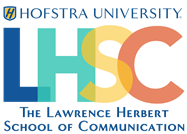By Olivia Hillestad
As the sun rose over Jones Beach State Park, a vibrant sea of pink overshadowed the golden shine of the shoreline. Pink T-shirts, ribbons and hats, the color spread as far as the eye could see. Some 65,000 people gathered on the beach in the morning, coming together for a powerful cause.
The American Cancer Society held the 31st annual Making Strides Against Breast Cancer of Long Island on Oct. 20. The five-mile walk is one of many Making Strides events that raise funds for cancer research and provide a community space for survivors and supporters.
“So, this all came because breast cancer is an issue that has affected so many, and we know that we need resources to better understand why people are getting breast cancer and also spread awareness about prevention and early detection,” said Making Strides Long Island Executive Director Katie Schafer. “Since the inception of Making Strides Against Breast Cancer, we’ve seen so much progress. We’ve seen decreases in death rates, and that comes to new treatments, but also being able to spread that message about getting screened.”

point on the Jones Beach boardwalk. // Photo by Olivia Hillestad/Long Island Advocate
According to the American Cancer Society, one in eight women in the U.S. (13.1%) will be diagnosed with invasive breast cancer and one in 43 (2.3%) will die from the disease. In New York specifically, about 16,700 women are diagnosed with breast cancer annually, and about 2,500 die from the disease each year, according to the New York State Department of Health.
One pillar of Making Strides events is encouraging women to receive annual/biannual mammographs. Breast cancer typically has no symptoms when it is small and easily treated, as described by the American Cancer Society. For women, like Making Strides attendees Mairead Ryan and Andrea Maxwell, annual exams can be world-altering.
One in eight females will develop breast cancer in their lifetime. Routinely practice self-exams, get mammograms as recommended and talk with your health care provider early and often. Early detection saves lives. Learn more: https://t.co/Q7TpEJ9iUj pic.twitter.com/ODpAJQjpUq
— NYSDOH (@HealthNYGov) October 25, 2024
“That test is a lifesaver,” said Maxwell, who was diagnosed after an annual exam in 2022. “There is no doubt about it. I have always gone because I’m an adopted child and I had no previous medical history. So, I started at a very young age, but now I get all of my friends to go, and I guess I keep tabs on every single one of them. ‘Did you go? Did you go? Did you go?’ And they all do it. It saved my life.”

Ryan is a pediatric cancer survivor and was diagnosed with Stage Four metastatic breast cancer in February. Despite currently undergoing treatment, she made it to the event alongside her friends and family, all wearing “Team Mairead” shirts.
“The biggest thing is that they found it during an annual exam,” Ryan said. “So, my biggest piece of advice is to not skip your annual appointments and to always advocate for yourself.”
At 26, Ryan is well below the recommended age to start mammography screening, so annual exams were essential in catching her cancer.
“The hardest part is probably being the youngest person with breast cancer by a lot,” Ryan said. “Because usually breast cancer is detected in your 60s and I am currently 26, so it’s hard to find people to relate to, but hopefully I can be a source of support for other people.”
In a study published by the American Cancer Society earlier this year, the rate of breast cancer for women in their 20s increased by about 2.2% a year from 2012 to 2021. However, the highest risk of breast cancer diagnosis remains among women in their 70s, with women in their 80s having the highest risk of breast cancer death, according to the American Cancer Society.

Earlier this year, the recommended age to start mammography screening was lowered from 50 to 40 by the U.S. Preventive Services Task Force. The American Cancer Society recommends annual screening starting at age 45, with the option to start at 40.
While the death rate from breast cancer has dropped by 44% since 1989, according to the American Cancer Society, not all women have equal health outcomes. In the same study from earlier this year, Black women have a 5% lower breast cancer incidence than White women, yet they also have a 38% higher mortality rate. As for American Indian/Alaska Native women, they have a 10% lower breast cancer incidence than White women, but a 6% higher mortality rate.
Strides are being made in improving health outcomes for all women, and men, who are diagnosed with breast cancer. The state health department cites breast cancer as the second leading cause of cancer-related deaths among women in New York. To combat this, the state has made strong moves to make screening more accessible, including a statewide Cancer Services Program (CSP) that provides free screenings.
CSPs also connect New Yorkers to other local services, with many screen locations across the state open on weekends and late to make appointments more accessible. Additionally, according to the state health department, New York does not allow most health insurance plans to charge co-pays or coinsurance for breast cancer screening and diagnostic tests.
Continuing in its mission, the ACS’s Making Strides Against Breast Cancer of Long Island raised about $1.7 million, according to the running total and donation page located on their website. The ACS has raised more than $600 million for breast cancer research since 1993.
But the Jones Beach event and ones like it are about more than a walk. For a few hours on a Sunday morning, a community of survivors and their supporters joined together for a bigger cause. For women like Ryan and Maxell, the event represents hope, resilience and a future when no one must face breast cancer alone.









